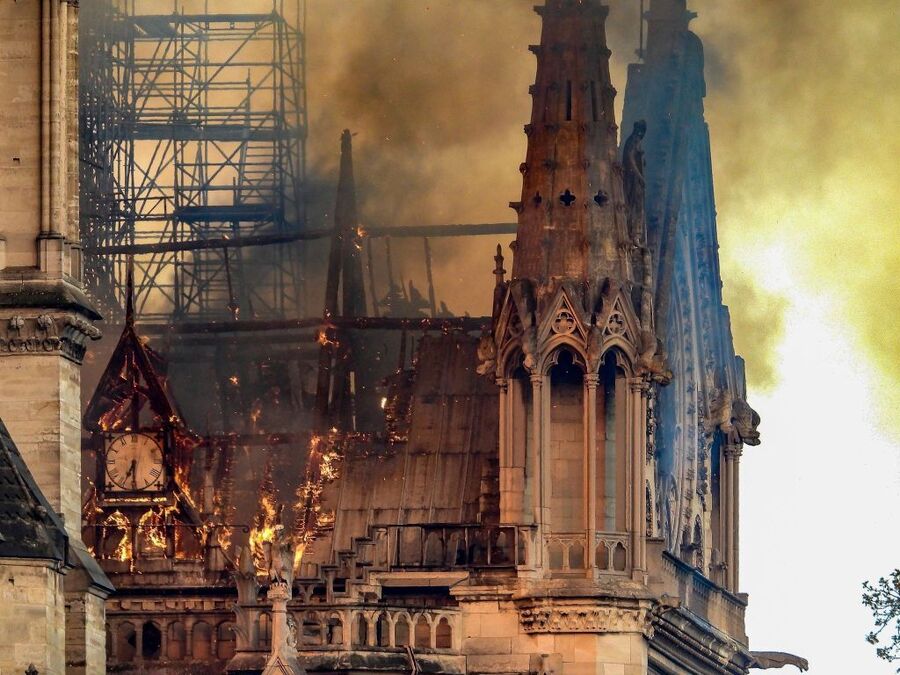
Comment: Perhaps, but only unity in the sense of the majority of people against the Parisian elites.
It is rare that gaps need to be closed in the sky. In this case, though, it was urgently needed. For almost five years, Parisians looked into a sad emptiness when they walked past Notre-Dame and looked up. The void reminded them of a national trauma: the evening of April 15, 2019, when smoke first rose from the Gothic building and flames then shot out of the roof.
With every catastrophe, there is a moment when the hope dies that the drama can still be averted. On that evening in April, it was the minute the glowing tower plunged into the depths. On both banks of the Seine to the left and right of the Île de la Cité, people stood and shouted, unable to believe what they were seeing.
Television stations sent images of the burning "flèche" around the world, just as they had shown the collapsing towers of the World Trade Center on September 11, 2001. And in November 2015, the footage of desperate people fleeing from Islamic State (IS) terrorists via windows in the Bataclan concert hall in Paris, hanging helplessly from the façade.
On this April evening, France once again felt it was the victim. After the terrorist attacks in 2015, in which 146 people died, the IS attack in Nice the following year and the weeks of violent demonstrations by the yellow vests in the winter of 2018, now Notre-Dame was also burning. The "epicenter of our lives," as President Emmanuel Macron would later state. A statement that was, of course, infused with hyperbole.
Comment: The reason the ND fire joins the above list of terror attacks is because it was also a terror attack, committed by people in power who hate Christianity, and thus humanity.
Macron's Risky Bet on the Future
Many French people last visited the cathedral as a child, during a school or family trip. Many of them are atheists, Muslims or Jews. Strangely touched, they nevertheless realized that night how much connects them with this building. If only because it was always there.
Notre-Dame may be Catholic, but somehow it belongs to everyone. The church survived the revolution, the Paris Commune and two world wars. The first bells to ring after fierce fighting in liberated Paris in August 1944 were those of Notre-Dame. On the night of the fire, Jean-Luc Mélenchon of the left-wing populist party La France insoumise, an avowed atheist, said it felt as if something had happened to a close family member.
The need to comfort the grieving nation was great, even though there were no fatalities and there was no terrorist attack behind the disaster.
Comment: There was, but the government, wisely perhaps, chose to cover it up.
The next day, Macron announced in a speech to the nation that he wanted to have the monument rebuilt within five years - and that it would be even more beautiful than it had ever been before. The ruins of the cathedral were still smoking. But we can do this because we are "a nation of builders," Macron said.
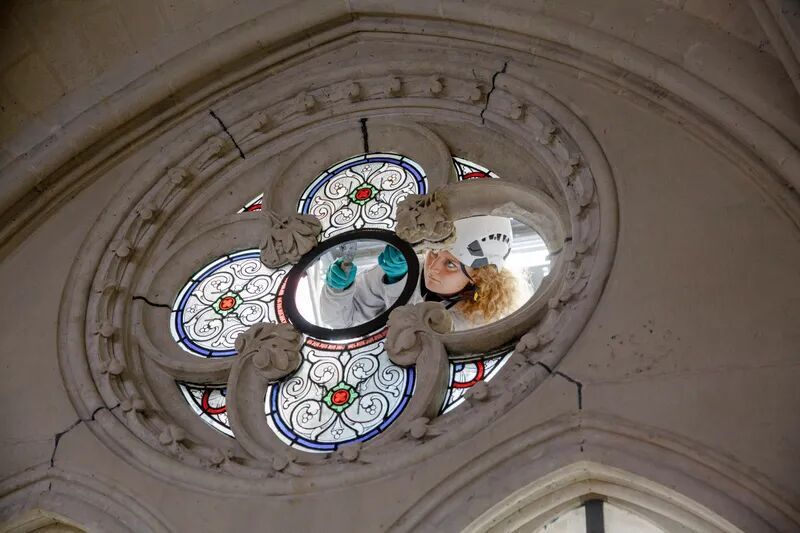
Philippe Villeneuve has been chief architect of Notre-Dame since 2013 and is responsible for the conservation and restoration of the cathedral. He had applied for the national job posting, it was his dream role. "Without the architect Eugène Viollet-le-Duc, who made decisive changes to Notre-Dame in the 19th century and also designed the crossing tower, I would never have become an architect myself," says Villeneuve. For almost five years, his office has been a portacabin set up right behind the church. Relics of the fateful night still lie on the cupboards and desks to this day: Parts of old clock faces that fell into the nave. Molten lumps of lead from the roof of the church.
Villeneuve wasn't in Paris on April 15, 2019, so he neither saw the crossing tower collapse nor the flames blazing on the roof. "And that was a good thing because I couldn't have handled it. I didn't look at any pictures of it afterward either." - Really, not a single one? - "I know, it sounds strange. Only since the tower has been back on the roof have I been able to do that to myself."
Tables with elongated rectangles in different colors hang in Villeneuve's container office. They each show the beginning and end of a construction phase - like an abstract art work that only insiders can understand. The Notre-Dame construction site is a complex logistical undertaking. It was divided into 140 individual construction sites, otherwise the technical challenges of reconstruction wouldn't have been met.
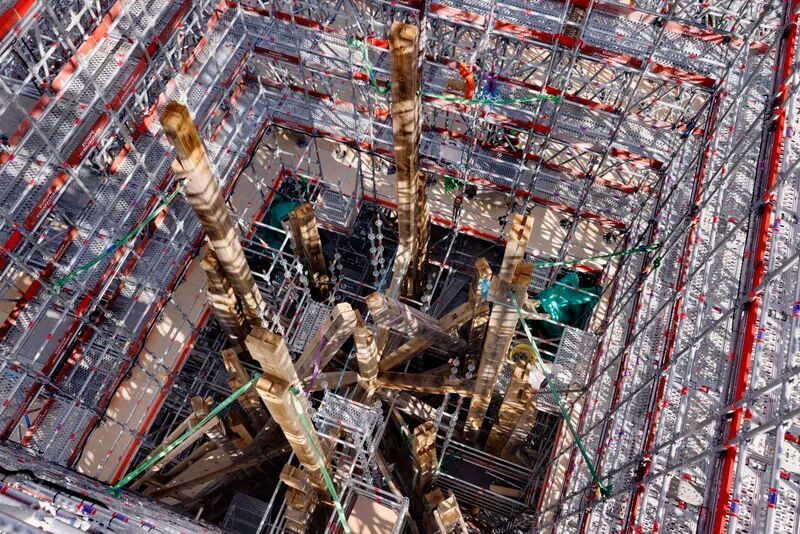
For the past five years, Villeneuve has dedicated himself exclusively to this construction project - the kind that only comes along once in a century. The first one and a half years after the fire were spent securing the church, which was long considered to be in danger of collapsing. Villeneuve had hundreds of stones inspected to check how badly the heat had damaged them and whether they were still usable. He and Notre-Dame are now practically a single entity.
The 61-year-old pulls up the left sleeve of his cardigan, revealing the top of the spire beneath. "It takes up the entire arm, and there are more tattoos on the chest," says Villeneuve. Since the fire, he has had half the cathedral tattooed onto his body: the rescued north tower, the south tower, two mythical creatures on the façade and the copper rooster. He says he had to do something to keep what he had almost lost with him at all times.
Is that not a bit crazy though? - "Let's call it passion. I built a model of Notre-Dame when I was 16. I love this church, and I'm far from the only one."
When the crossing tower was erected on the roof again in mid-February, even the broad-shouldered carpenters are said to have had tears in their eyes. In the run-up to this, the country's four leading wood processing companies, who are actually competitors, had spent a year-and-a-half working together. Given the tight deadlines, a single company would never have been able to complete the task on time. All four companies worked to produce the thousand oak elements for the tower.
Some 250 companies and numerous trades are working here in parallel, including painting restorers, stonemasons, roofers, specialist carpenters, air conditioning and heating technicians, archaeologists and scaffolders. More than 2,000 men and women are involved in the resurrection of the cathedral.
This national tour de force is being financed by 340,000 private donors who are raising a total of 846 million euros. Within only three days after the fire, the sum exceeded the total donations that the French transfer annually to the country's 10 largest charitable organizations. That's quite a lot of money for a pile of old stones, some have said critically. But they remain a minority.
The windfall came at the right time for President Macron, who had arbitrarily announced the deadline for reconstruction after the fire without consulting the experts. Five years sounded good. Besides, the Olympic Games would also be held in Paris in 2024.
People accused him of megalomania and the negligent handling of a listed historical monument at the time. Art historians and architecture experts wrote an open letter to the president. They warned against linking reconstruction to a political agenda or setting an actual set year for completion.
A Culture War over Reconstruction - Faithful to the Original or Modern?
There was another worry: Macron had declared that he also wanted to give contemporary architecture a place in the reconstruction. After that, strange designs for a modern tower began circulating. Some architects suggested a crystal spire "as a symbol of the fragility of our history." Others wanted to place a greenhouse and beehives on the roof of Notre-Dame. Yet others wanted to illuminate the roof from below so that it would be visible from a distance At some point, France's star architect Jean Nouvel weighed in. His objection: It isn't necessarily modern to replace something that already existed with something new.
Notre-Dame chief architect Villeneuve says he never tried to stop the discussion about all these idiotic ideas. "I knew that the crazier the designs, the greater the chances of a faithful reconstruction," he says. In July 2020, a national expert commission voted unanimously in favor of an historic reconstruction.
One of the peculiarities of the French political system is that no commission or parliament ultimately decides on the architectural drafts. The president does. It's a monarchical gesture that survived the revolution. But Macron proved to be wise. A short time later, he agreed to a faithful reconstruction.
In the secular Fifth Republic, Notre-Dame belongs not to the church, but to the state. The latter makes the cathedral available to Catholics for the sole purpose of practicing their faith. And this according to a law passed in 1905. It made Emmanuel Macron the chief builder; the government is responsible for all renovation work and its financing.
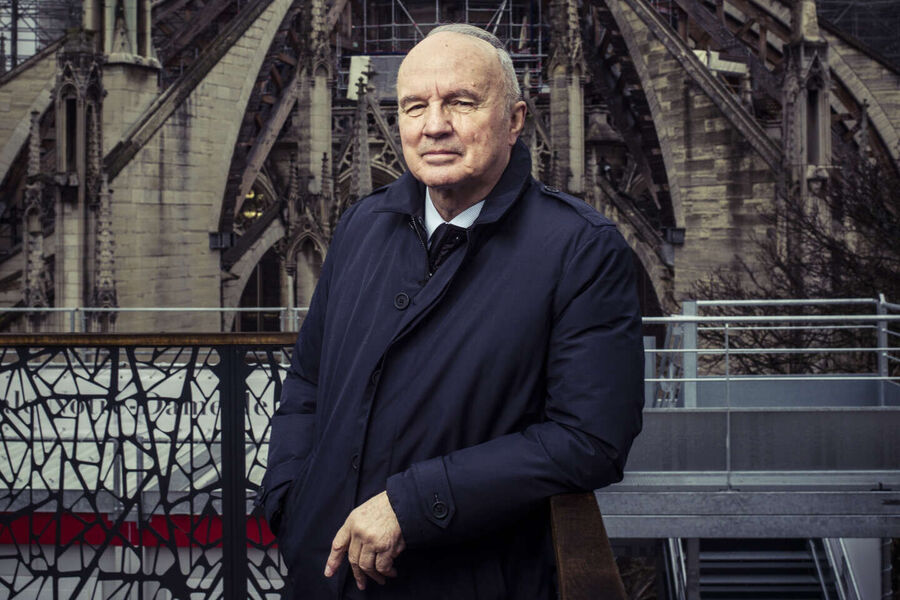
Comment: He certainly didn't...
He moved into an office close to the president's in the Élysée Palace and explained to all critics that he was experienced at leading a task force in the military, so why not the Notre-Dame rescue operation as well? From then on, the general was primarily responsible for one thing: ensuring compliance with Macron's five-year plan.
Georgelin headed the "Établissement public," the public institution for reconstruction that the government had founded. He had himself photographed with an ax in the forest in front of oak trees selected for the new roof truss and gave everyone the reassuring feeling that the five-year deadline wasn't as crazy as it sounded.
Last August, the then 74-year-old had a fatal accident while on a hike in the Pyrenees. Macron dedicated a national memorial service to "the soldier who believed in heaven," as he expressed it, in the courtyard of the Invalides in Paris.
Comment: For what it's worth, the Russian deputy ambassador to the UN strongly implied that Georgelin was also moonlighting as a 'military advisor' in Ukraine, where, the ambassador suggested in a tweet last August, the 'retired' general was killed in a Russian airstrike - and thus his 'death by fall while hiking alone in the Pyrenees' was a cover story.
Today, a glass conference room with a view of Notre-Dame's towers bears the name of the deceased. His successor, Philippe Jost, likes to use it for interviews. Jost, who was the general's deputy, is also a devout Catholic and previously worked in the French Defense Ministry. On this morning in March, he can see the new "flèche" from the large conference table at a height of almost 100 meters, a view that seemed unimaginable five years ago. "It only worked because the whole of France rushed to Notre-Dame's sickbed," says the 63-year-old. "What we are experiencing here is an incredible collective undertaking."
This construction site, he says, is also a demonstration of the will. "In a world of crises and given the often gloomy mood of the decade, the Notre Dame drama offered a unique opportunity to not surrender to fate, to take up the challenge and unite the whole nation behind this project. Emmanuel Macron already recognized that on the night of the fire."
Comment: That's one spin you can put on it. Another is that it took the nation further down into despondency and despair, from which it may not recover.
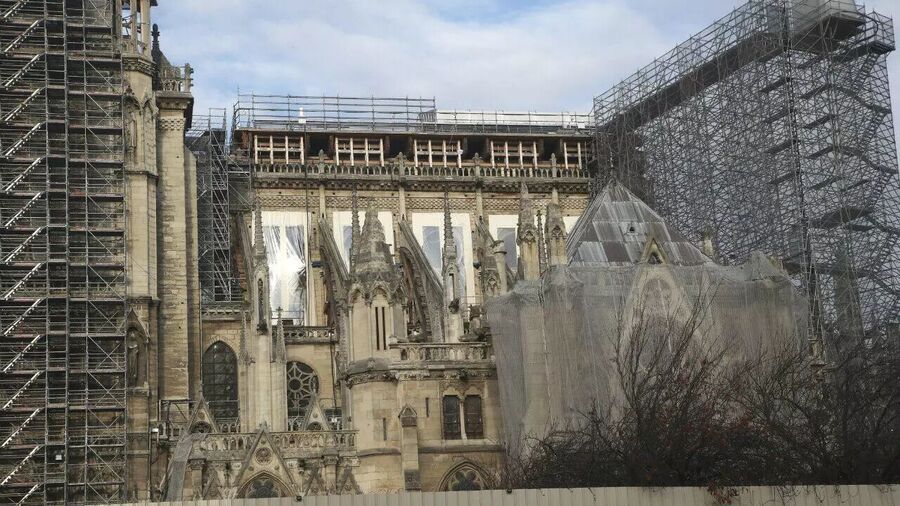
Cuiset is the chief scaffolder here, and his company specializes in listed historical buildings. In the past, the company has put up scaffolding for the cathedral in Metz, the Louvre in Paris as well as Versailles. Cuiset has been living in a shared flat in Paris three days a week for five years now so that he can be part of the reconstruction of Notre-Dame.
"Many people think that scaffolding is just a pile of metal, but that's not true," he says. "It can be a work of art. When I draw one, I add pipes that it doesn't need structurally so that it looks nicer. Because I want it to do justice to the monument it surrounds."
Then, against all safety precautions, the 58-year-old climbs onto a barrier to take photos. This work of art is also ephemeral, it is currently being dismantled. As little metal as possible should obscure the view of Notre-Dame during the Olympic Games in the summer.
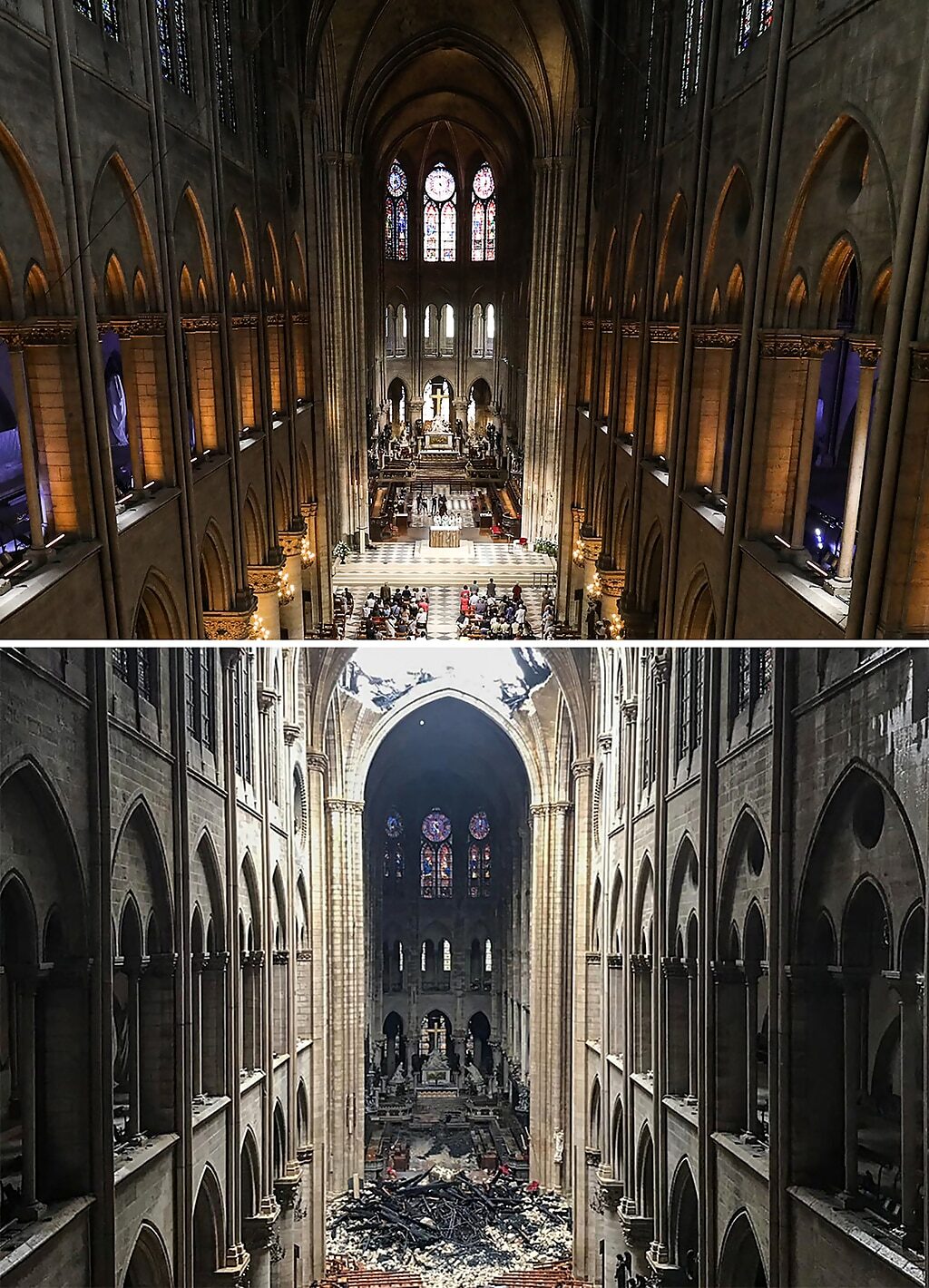
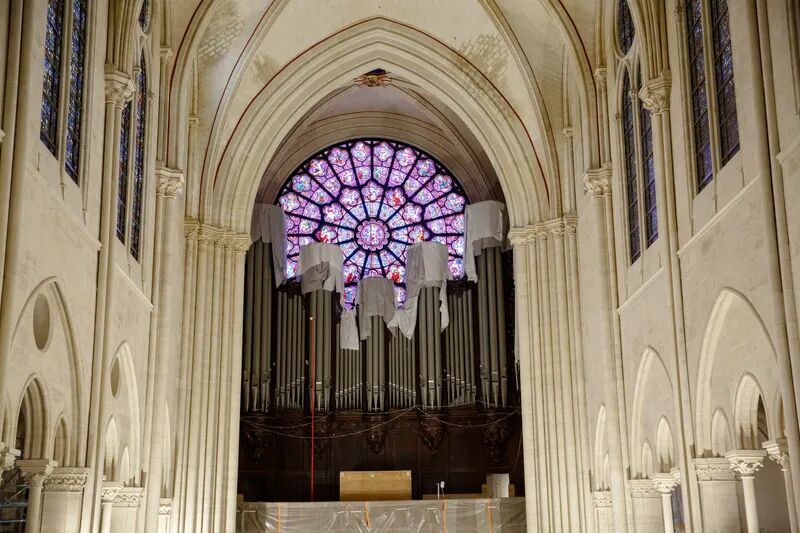
The daffodils are blooming in the garden of the Archbishop of Paris, and church bells can be heard from afar. The Catholic Church is not allowed to levy a church tax in France and is poorer than the German Church, but Monseigneur Laurent Ulrich lives very nicely. At the beginning of the 20th century, a wealthy widow bequeathed her 1,600-square-meter city palace and private chapel in the 7th arrondissement to the diocese of Paris, with the sole condition that the archbishop should live there in future. The property is now estimated to be worth over 50 million euros.
The world's richest man lives next door. He has also been the biggest donor in the effort to restore Notre-Dame. Bernard Arnault, owner of the luxury group Louis Vuitton-Moët Hennessy, gave 200 million for the reconstruction - twice the amount given by his eternal rival, the billionaire and art collector François Pinault.
It's raining outside, but Monseigneur is in good spirits on this morning. A few days ago, the topping-out ceremony for the newly constructed roof truss of Notre-Dame took place. In December, Laurent Ulrich consecrated the rooster for the crossing tower, which contains the relics of two saints that survived the night of the fire, a small part of the famous crown of thorns of Jesus Christ and, more recently, a parchment paper with the names of the craftsmen involved in the reconstruction.

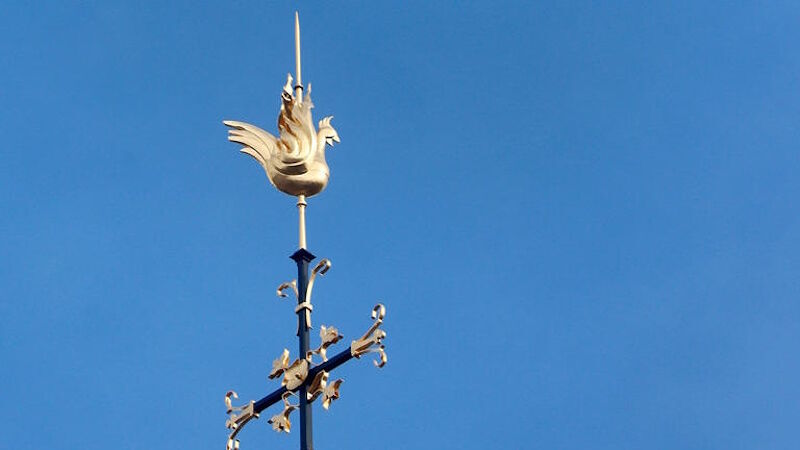
The archbishop says he has been worried in recent years. "France has become a divided country, a fractured society," he says. "But Notre-Dame has managed to unite our nation for a moment. That makes me happy."
Monseigneur Ulrich doesn't want the April 15 fire to be forgotten, even if it was perhaps only caused by a short circuit or another trivial cause. The cause has not yet been determined. The archbishop has issued a call for tenders for six new stained glass windows in the cathedral. They are to be designed by contemporary artists "to leave a trace of the event that deeply wounded Notre-Dame. And which nevertheless showed what we are capable of: We were able to close this wound again." Macron has approved the project.
There are many things that divide the archbishop and the president. Just a few weeks ago, the right to abortion was enshrined in the constitution at Macron's initiative. A draft law on euthanasia is currently being prepared - issues that Monseigneur does not support. But when it comes to Notre-Dame, the two are in agreement. "Next December, the president will give the church back to Catholics to practice their religion. And we will thank him and everyone involved for that."
The faithful, Parisians and tourists will then discover a cathedral that is brighter and more radiant than ever before. After extensive work, the stones and columns inside the nave have been restored to their original color. Restorers painstakingly removed the dirt of past centuries, layer by layer. They are now "blonde" again, as the experts say. This color gives the nave something unusually sculptural. A depth that has been overshadowed by shades of gray for decades.
The colors in the neo-Gothic sacristy, once designed by architect Viollet-le-Duc, are also visible again for the first time. The restorers who cleaned it were amazed at how brightly colored this room once was, how deep blue the ceiling, how pink the frescoes.
Notre-Dame is actually more beautiful than before.
At the very front of the altar is an 18th century Pietà, a depiction of Mary with the body of Jesus Christ taken down from the cross. On the evening of April 15, molten lead had flowed from the roof of the church directly into the open right hand of Jesus, staining the entire sculpture with black splashes. There is no sign of it today. The restorers only left the lead in the palm of the hand. As a reminder of a special moment.
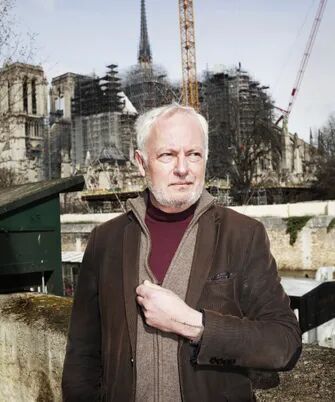
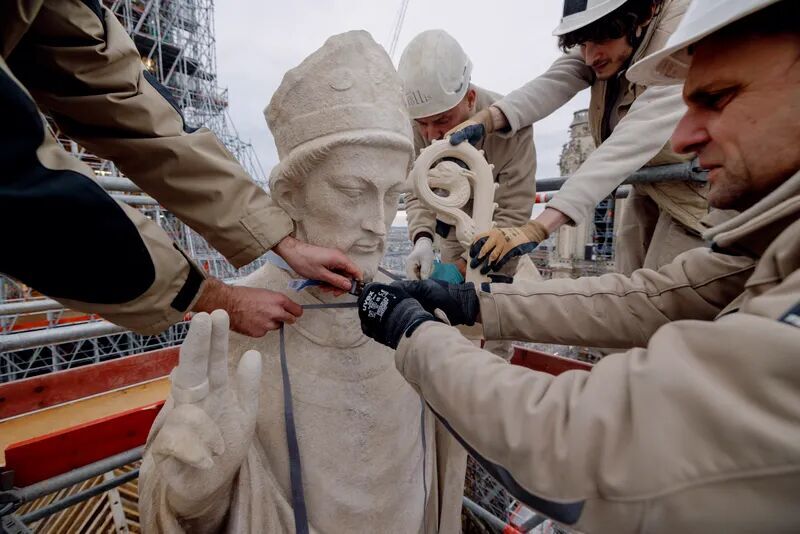
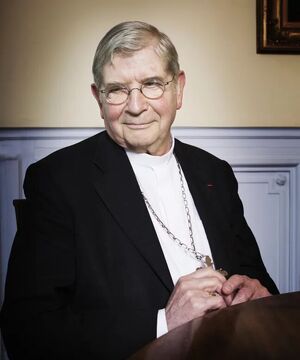
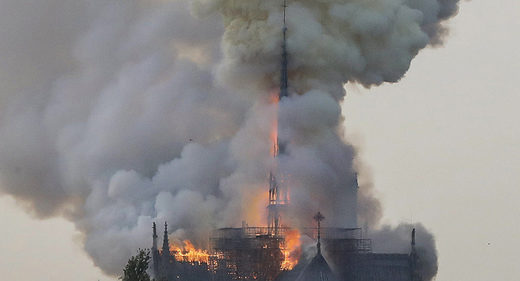
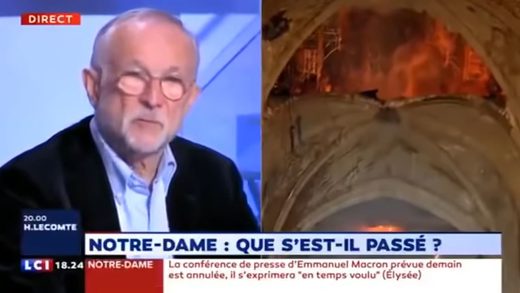
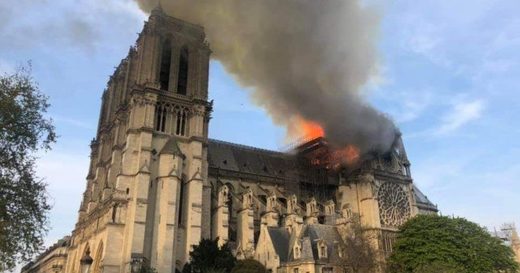
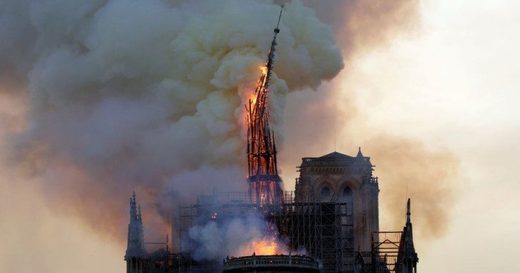



Comment: The ND renovation may be almost complete, but the culprits - and their handlers - remain at large.